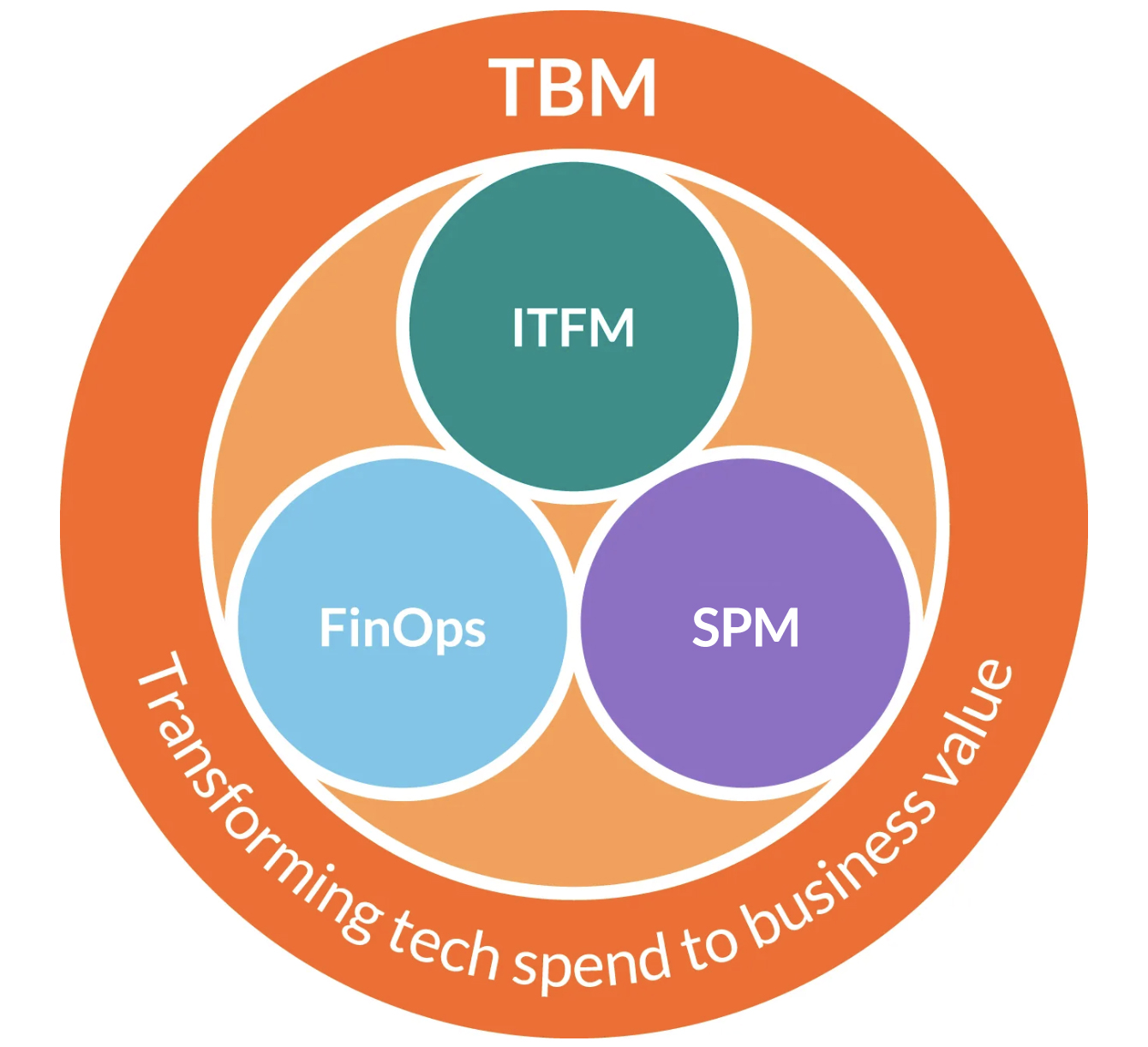Sponsored by Apptio
Unlocking technology value: the essential role of TBM in modern IT management
Manage spend, optimize costs, and drive greater value from your technology investments with TBM


Technology is now the backbone of business, fueling competitive advantage, innovation, and agility. Virtually every function — finance, operations, marketing, and customer service — relies on apps and infrastructure spanning on-premises and cloud environments.
Even as inflation and interest rates rise, organizations are increasing technology spend. Our recent survey report showed that 90% of organizations expect larger budgets in 2025 to sustain infrastructure and drive innovation. In line with our findings, Forrester predicts software spend will grow 10.5% annually through 2027, while IDC forecasts cloud spend rising nearly 20% per year through 2028. With growth comes complexity—and the challenge of proving value.
The challenge: managing tech spend and maximizing value
The shift from on-premises to hybrid and multi-cloud environments has introduced new cost dynamics. CapEx has given way to variable OpEx, making forecasting harder. Skilled talent is required to manage hybrid systems and cross-functional initiatives like AI and sustainability. Meanwhile, procurement is more distributed than ever, complicating visibility across spend categories.
The result: 75% of companies can’t prove a solid ROI for their cloud transformations. Technology leaders must deliver accurate forecasts, optimize costs, and show business impact while still running daily operations. Metrics that matter most in 2025 are ROI (87%), cost-benefit analysis (52%), operational efficiency gains (41%), and net present value (40%).*
TBM: the way to orchestrate technology value
IT financial management (ITFM) and Technology Business Management (TBM) had similar origins, focusing on optimizing IT budgets. Over the past decade, however, the emergence of public cloud, SaaS, and Kubernetes has shifted a significant portion of technology spend outside the IT budget. Engineering teams and business lines that leverage these technologies increasingly manage their own spend separately, leading to the emergence of practices like FinOps.
While ITFM and FinOps are distinct practices, each addresses specific aspects of technology spend within its domain. Additionally, as modern work practices — including agile and hybrid approaches — have expanded, Strategic Portfolio Management (SPM) has emerged as a discipline to enhance the management of workforce, resources, and project workstreams across technology initiatives, ensuring alignment with business strategy and outcomes.
As complexity and interdependencies have multiplied, bridging the gaps between ITFM, FinOps, and EAP practice areas has become increasingly important. Only with an integrated perspective can companies ensure technology investments are doing more than just helping run the business, but rather driving value in the form of business outcomes like increased operational efficiency, accelerated digital transformation, improved innovation and agility, and so on. This is where the discipline of TBM really shines.
TBM spans all the practice areas mentioned above, providing a unified approach to managing technology investments across the enterprise, from on-prem to cloud, to highly skilled tech labor. Taking a comprehensive approach to technology investment management makes it easier to stay aligned with corporate goals and translate investments into clear business value.
Moreover, TBM elevates technology to the level of corporate strategy by translating tech spend into a language the rest of the business can understand via a taxonomy for identifying and allocating tech costs and investments. This includes providing critical data that IT leaders need to justify technology spend to senior leadership, such as technology performance and utilization data (48%), risk and compliance data (43%), and financial data (38%).*

TBM in the age of change: hybrid cloud, AI, and sustainability
Having a strategy for spanning technology management practice areas becomes increasingly essential as innovations and initiatives have cross-departmental impacts. Three examples come to mind: hybrid cloud, AI, and sustainability.
Hybrid cloud is a computing model that integrates and orchestrates workloads between public cloud and private cloud, i.e., on-premises datacenters. A hybrid cloud model has numerous benefits, including increased flexibility and scalability, cost optimization, data sovereignty, and risk reduction. The acceleration of hybrid cloud has increased the need to orchestrate usage across public and private clouds, requiring greater coordination between ITFM and FinOps to manage the increased complexity of tracking total cost of ownership, allocation challenges, and cross-environment optimization.
AI is another area that benefits from the cross-practice scope of TBM. When companies kickstart AI initiatives, workloads can rapidly expand, increasing cloud costs and straining on-prem infrastructure. Funding these AI initiatives presents its own challenges, with organizations reporting they are using a mix of internal capital allocation (50%), cost savings from AI-driven efficiencies (39%), and dedicated AI funds (36%).*
This makes a hybrid view essential when balancing cost optimization with performance and managing technical and human resources, particularly as companies look to scale successful projects.
Similarly, sustainability initiatives related to carbon emissions and energy consumption goals require a cross-practice approach. These initiatives are increasingly important as organizations respond to key drivers, including technological advancements (74%), brand reputation (73%), and consumer demand (71%).* As businesses aim to reduce their carbon footprints, TBM provides the transparency needed to monitor related metrics across cloud and on-prem infrastructure, helping align technology goals with corporate sustainability objectives.
The importance of proper cost management and optimization solutions
TBM is a strategy, but execution depends on proper tools. Financial and operational data are often siloed:
- ITFM tracks ownership costs for applications, services, and infrastructure.
- FinOps manages cloud optimization across providers.
- SPM oversees resources, workforce, and project workstreams to ensure alignment with goals.
Our integrated solutions connect these disciplines, ingesting and allocating spend across the enterprise to break down silos. Together, they provide the backbone for TBM, giving leaders a holistic view of all technology investments.
TBM: the path to greater technology value
As technology investments become increasingly complex, TBM is essential for maximizing business value and driving strategic outcomes. Our suite of TBM solutions is designed to help you better manage and optimize your entire technology estate and more quickly reach your goals.
Visit our Innovation Hub to see how we’re continuously improving our TBM offerings to provide a holistic and nuanced view of all your technology investments. Whether you’re managing hybrid cloud, AI initiatives, or sustainability goals, our solutions provide the clarity and insight needed to drive success.
*Apptio, an IBM company. (2025) Guiding Technology Investments: Insights for Business Leaders – Global Survey Report
Sign up today and you will receive a free copy of our Future Focus 2025 report - the leading guidance on AI, cybersecurity and other IT challenges as per 700+ senior executives

With over 20 years of experience in information technology, financial services, engineering, software development, and the airline industry, Pete has built a solid reputation for successfully designing and executing large-scale, complex business and technology transformation programs within major global organizations.
-
 Google launches flagship Gemini 3 model and Google Antigravity, a new agentic AI development platform
Google launches flagship Gemini 3 model and Google Antigravity, a new agentic AI development platformNews Gemini 3 is the hyperscaler’s most powerful model yet and state of the art on almost every AI benchmark going
-
 Microsoft unveils Foundry overhaul for managing, optimizing AI agents
Microsoft unveils Foundry overhaul for managing, optimizing AI agentsNews The hyperscaler is aiming to simplify AI agent oversight, as organizations grapple with the increasingly complicated business of processing and paying for outputs